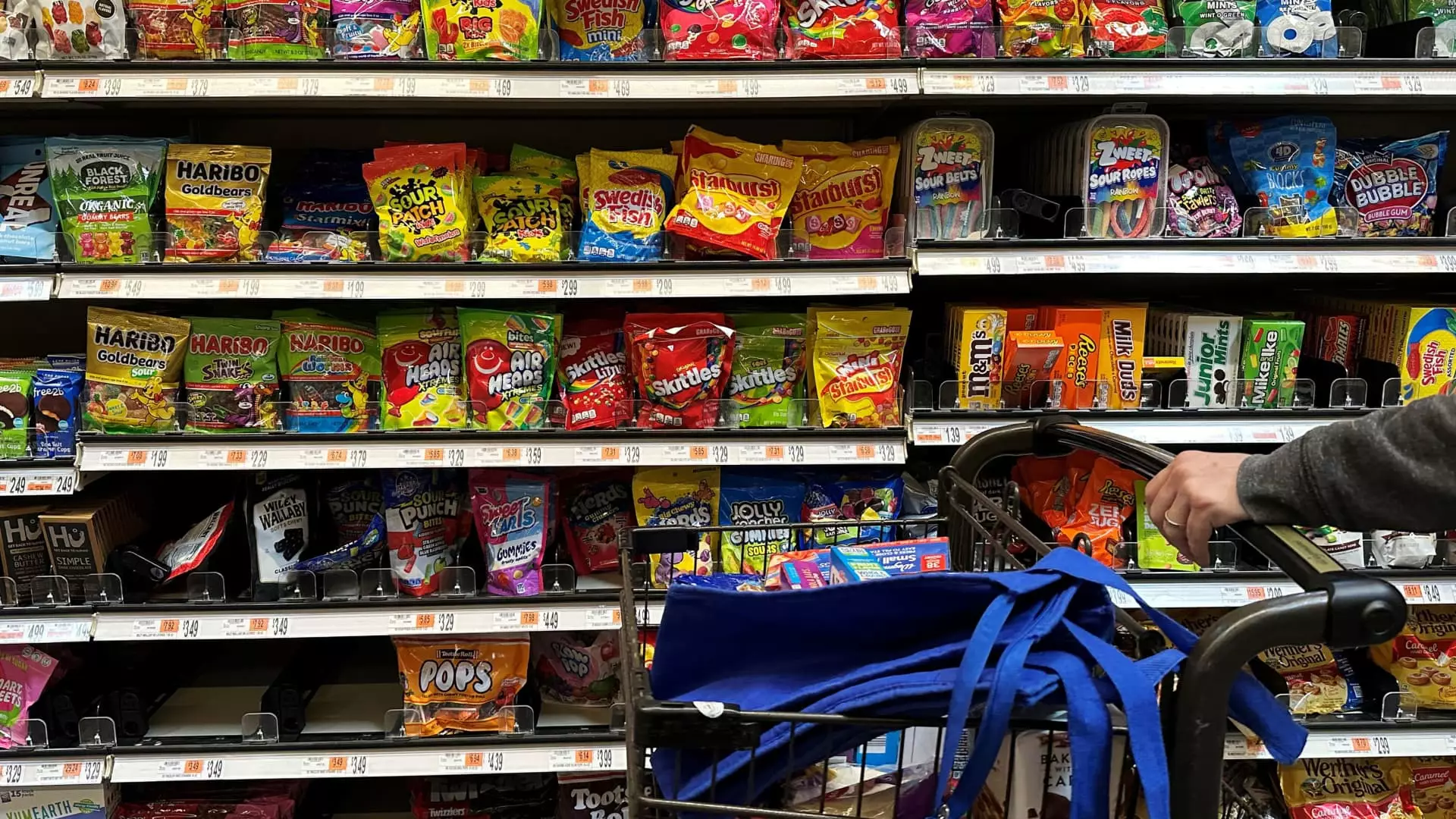The vibrantly colored packaging of snacks and beverages is a staple of the American grocery aisle, tantalizing both children and adults alike. However, this colorful façade harbors a concerning truth: many of these vivid hues come from synthetic dyes that have been sources of controversy regarding their safety and health implications. In a recently announced initiative by the Food and Drug Administration (FDA), there is a palpable shift towards phasing out these petroleum-based dyes. This moment should not only be met with relief but also celebrated as a crucial step in our collective journey toward healthier food choices.
The Toxic Legacy of Artificial Dyes
For decades, brightly colored snacks, like Flamin’ Hot Cheetos and Skittles, have masked a troubling issue. These synthetic dyes, primarily used for their visual appeal, have long been embedded in our food system, raising alarms about their potential toxicity. The FDA’s latest announcement, suggesting a timeline to phase out such dyes, is refreshing. It reflects an increasing recognition that what we consume has immense implications not just for our well-being but for the welfare of future generations. Health experts, including FDA Commissioner Marty Makary, have indicated that these synthetic additives contribute to a broader landscape of health issues that plague American children today, including hyperactivity and other behavioral problems.
A Shift Towards Natural Alternatives
The FDA’s plan is not about halting progress but pivoting towards innovation, suggesting natural alternatives like beet juice and turmeric for vibrant colors that are both appealing and safe. This is a call to reformulate, with consumers increasingly valuing transparency and health-conscious choices. It’s essential that companies respond positively to this guidance, not just legislatively but ethically, prioritizing the well-being of their customers over convenience and profit margins. As we transition to using natural coloring agents, the food and beverage industry has an opportunity to lead by example in creating healthier and safer products.
Corporate Resistance and Accountability
Despite the FDA’s initiative, pushback from major food corporations has been expected. Industry giants like PepsiCo and General Mills have historically resisted moves to ban synthetic dyes, citing a lack of conclusive evidence linking them to adverse health effects. However, this stance raises questions about corporate responsibility and accountability. Thousands of studies examining synthetic dyes exist, many linking their consumption with health issues. The notion that extensive evidence must be provided before taking preventive action against potential harm is overly cautious and detrimental to public health.
This ongoing tug-of-war underscores the need for transparency in the food industry and demands that companies prioritize consumer safety over maintaining lower production costs. We must challenge companies to not only comply with regulations but to seek innovative solutions that embrace public health. It’s not merely about compliance; it’s about accountability.
Positive Consumer Pressure and Market Dynamics
Consumer advocacy has become an increasingly powerful force in shaping the food landscape, pushing brands to reevaluate their practices. The anecdote of Kraft Heinz reverting to artificial colors due to consumer discontent highlights the importance of market feedback. As consumers grow more health-conscious, they wield influence that can prompt systemic changes and reformulations in how companies operate. Transparency, ingredient integrity, and a commitment to creating safe products could become the new norm, guided by consumer demand rather than just regulatory pressure.
Moreover, advancements in natural coloring solutions have reached a level where they can successfully achieve the bold hues typically associated with synthetic dyes. This is not just a matter of aesthetics; it directly ties into how we perceive food and its marketing. As consumers, we play an integral role in redefining the standards of food quality and safety.
The Road Ahead: Innovations and Ongoing Oversight
As the FDA works towards implementing these changes, a clear action plan will be crucial. Phase-outs of synthetic dyes will require a steady commitment from both the FDA and the food industry. Moreover, the advent of new regulatory frameworks should bolster consumer trust in these products. The FDA’s commitment to establishing national standards can spark lasting change across the food supply chain while encouraging innovation in natural ingredients.
However, skepticism remains within the community regarding the FDA’s capability to enforce these changes effectively. History shows that regulatory efficacy often falls short due to limited oversight and corporate lobbying. It is vital that we hold these agencies accountable to ensure that the health of the American public remains at the forefront of their agenda. The commitment to eliminating synthetic dyes is just the beginning of a broader conversation about food safety and public health in the United States.
The transition away from synthetic food dyes is not merely a regulatory victory but a profound societal step toward a more health-conscious future. With the FDA leading the charge, it is now incumbent upon businesses, consumers, and health advocates to champion this cause, elevating our food supply and ensuring a safer, more vibrant future for generations to come.

